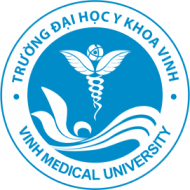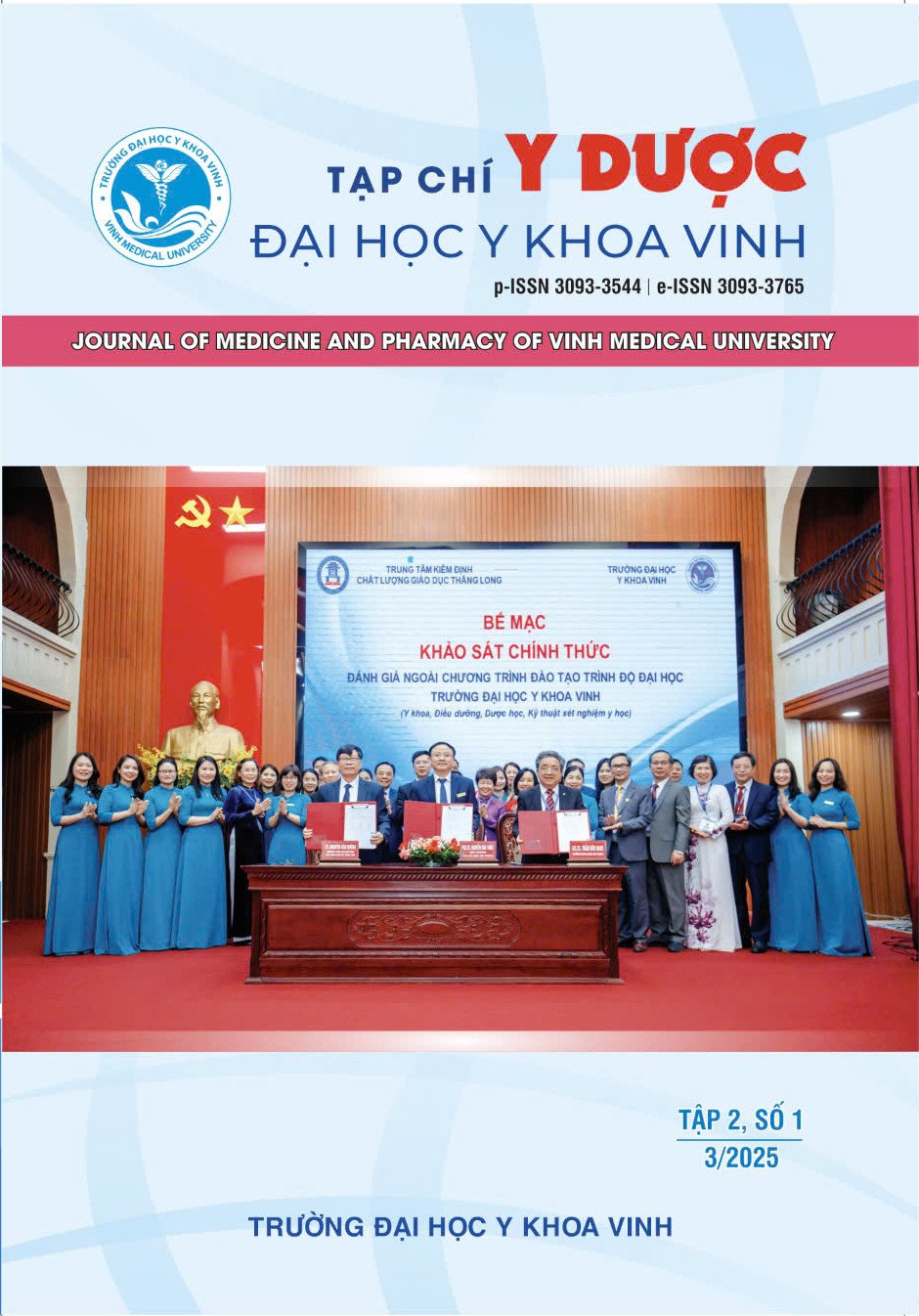Tình trạng sụt cân và một số yếu tố liên quan ở bệnh nhân ung thư biểu mô khoang miệng điều trị hóa xạ trị đồng thời tại Bệnh viện Ung bướu Nghệ An Weight loss and associated factors in patients with oral squamous cell carcinoma undergoing concurrent chemoradiotherapy at Nghe An Oncology Hospital Chuyên mục Các bài báo
##plugins.themes.academic_pro.article.main##
Tóm tắt
Nghiên cứu tiến hành trên 40 bệnh nhân ung thư khoang miệng điều trị hóa xạ trị đồng thời cho thấy 57,5% bệnh nhân bị sụt cân, với mức sụt cân trung bình 4 ± 1,5kg. Tỷ lệ sụt cân cao hơn tập trung ở nhóm bệnh nhân ≥ 60 tuổi (64%), bệnh nhân nữ (62,5%) và đặc biệt nhóm bệnh nhân có BMI trước điều trị ≥ 23 kg/m² (82,4%). Những bệnh nhân có viêm nha chu (83,3%), ở giai đoạn III–IV của bệnh (67,7%) và không được nuôi ăn qua ống thông (72,7%) cũng có tỷ lệ sụt cân cao. Các triệu chứng độc tính điều trị góp phần làm tăng tỷ lệ sụt cân, gồm viêm niêm mạc miệng độ III (76,9%), nuốt khó (70,8%), khô miệng (69%), buồn nôn/nôn (76,9%), khít hàm (80%), mệt mỏi (60%), chán ăn (60%) và rối loạn tiêu hóa (53,8%).
##plugins.themes.academic_pro.article.details##

Tác phẩm này được cấp phép theo Giấy phép quốc tế Creative Commons Attribution-NonCommercial-NoDeri Phái sinh 4.0 .
Tài liệu tham khảo
- I. Panarese et al., “Oral and Oropharyngeal squamous cell carcinoma: prognostic and predictive parameters in the etiopathogenetic route,” Expert Rev Anticancer Ther, vol. 19, no. 2, pp. 105–119, Feb. 2019, doi: 10.1080/14737140.2019.1561288.
- H. Sung et al., “Global Cancer Statistics 2020: GLOBOCAN Estimates of Incidence and Mortality Worldwide for 36 Cancers in 185 Countries,” CA Cancer J Clin, vol. 71, no. 3, pp. 209–249, May 2021, doi: 10.3322/caac.21660.
- F. Bray et al., “Global cancer statistics 2022: GLOBOCAN estimates of incidence and mortality worldwide for 36 cancers in 185 countries,” CA: A Cancer Journal for Clinicians, vol. 74, no. 3, pp. 229–263, 2024, doi: 10.3322/caac.21834.
- J. M. Price et al., “Pretreatment Lymphocyte Count Predicts Benefit From Concurrent Chemotherapy With Radiotherapy in Oropharyngeal Cancer,” J Clin Oncol, vol. 40, no. 20, pp. 2203–2212, Jul. 2022, doi: 10.1200/JCO.21.01991.
- T. Cederholm et al., “GLIM criteria for the diagnosis of malnutrition - A consensus report from the global clinical nutrition community,” Clin Nutr, vol. 38, no. 1, pp. 1–9, Feb. 2019, doi: 10.1016/j.clnu.2018.08.002.
- S. Ottosson, B. Zackrisson, E. Kjellén, P. Nilsson, and G. Laurell, “Weight loss in patients with head and neck cancer during and after conventional and accelerated radiotherapy,” Acta Oncol, vol. 52, no. 4, pp. 711–718, May 2013, doi: 10.3109/0284186X.2012.731524.
- V. Nazari, A. S. Pashaki, and E. Hasanzadeh, “The reliable predictors of severe weight loss during the radiotherapy of Head and Neck Cancer,” Cancer Treat Res Commun, vol. 26, p. 100281, 2021, doi: 10.1016/j.ctarc.2020.100281.
- Nguyễn Thị Hải Yến, “Đánh giá tình trạng sút cân trên bệnh nhân điều trị ung thư đầu cổ tại Bệnh viện K,” National Cancer Institute, vol. X1, no. 2, 2021.
- A. S. Redwan et al., “Predictive Factors for Critical Weight Loss in Saudi Head and Neck Cancer Patients Undergoing (Chemo)Radiotherapy,” Cancers (Basel), vol. 16, no. 2, p. 414, Jan. 2024, doi: 10.3390/cancers16020414.
- B. Vangelov, R. L. Venchiarutti, and R. I. Smee, “Critical Weight Loss in Patients With Oropharynx Cancer During Radiotherapy (± Chemotherapy),” Nutr Cancer, vol. 69, no. 8, pp. 1211–1218, 2017, doi: 10.1080/01635581.2017.1367943.

